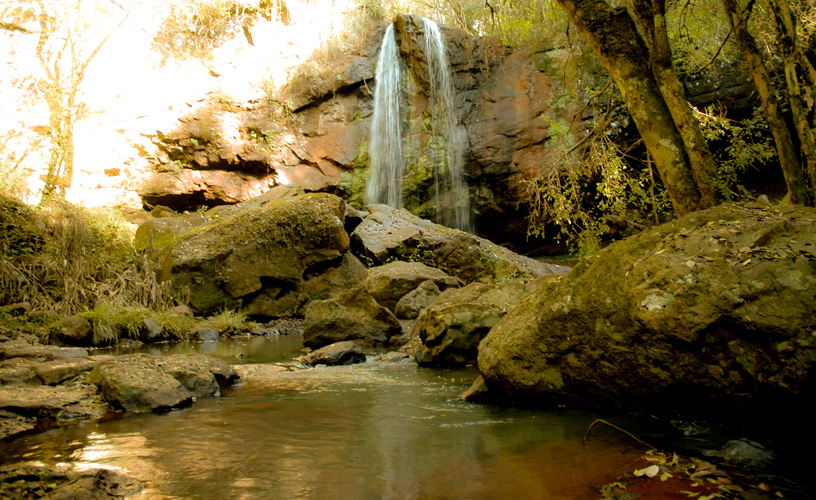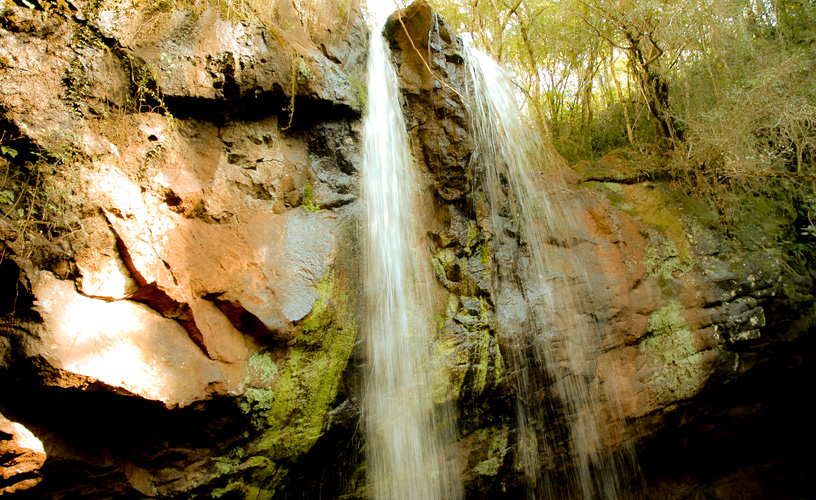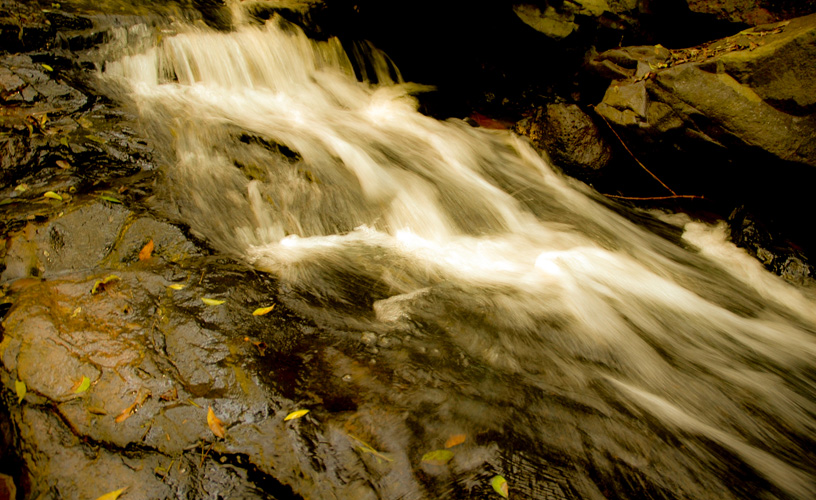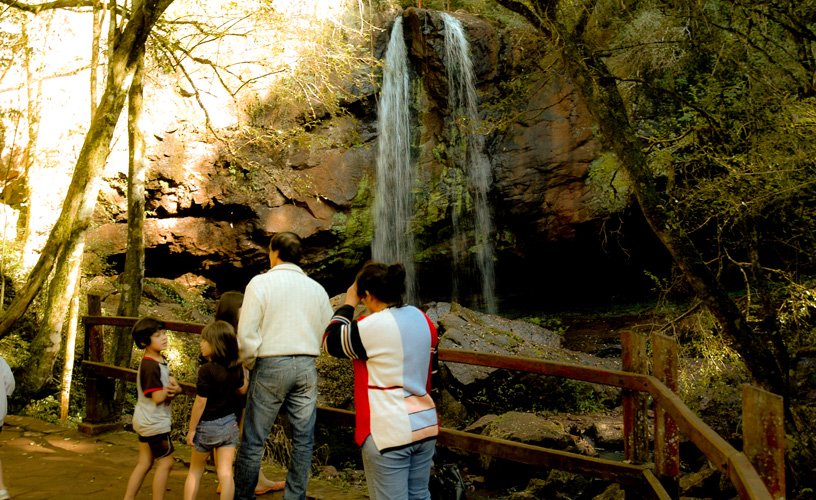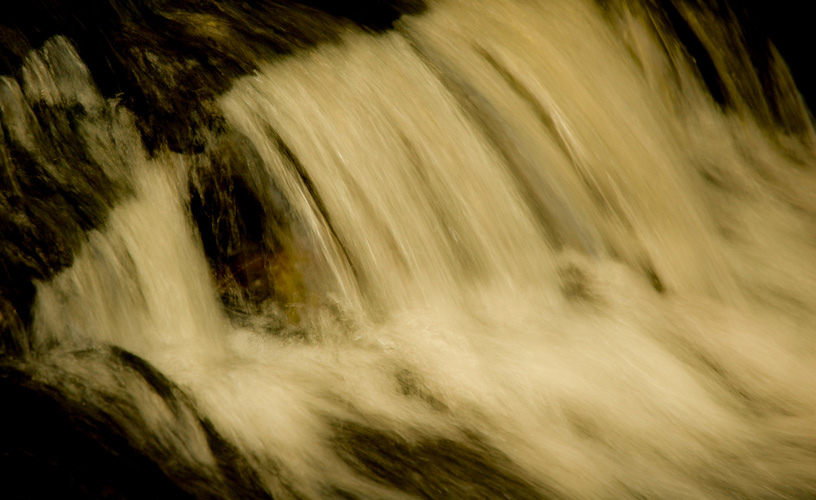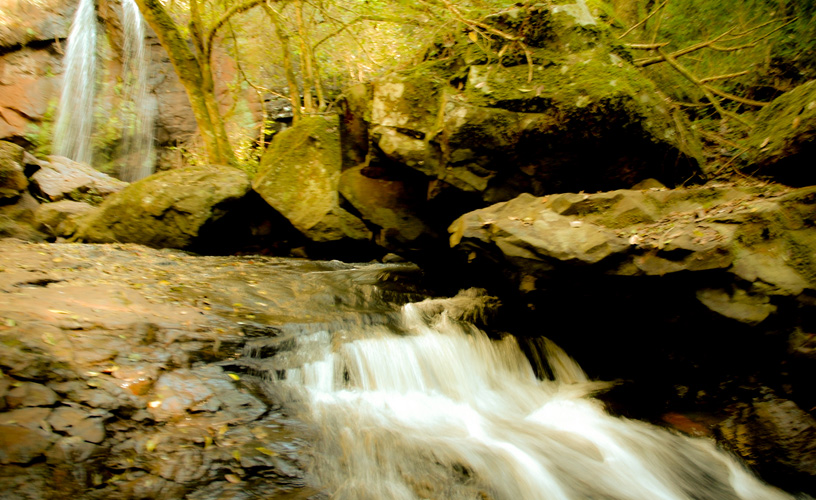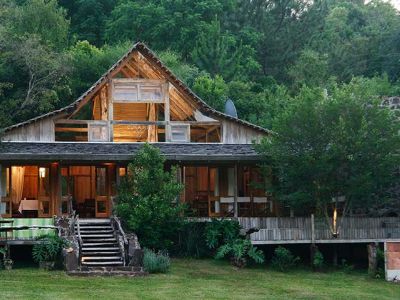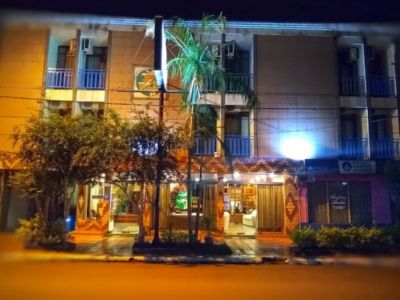Falls in the Whole Province of Misiones
Besides the Iguazú Waterfalls and the Moconá Falls, the red-soiled province features falls and cascades for all tastes and Oberá is a perfect starting point to visit them.
The red soil of Misiones is sprinkled by a countless number of small rivers and creeks, many of which boast falls along their course. These small waterways -which usually start from tributaries to the Paraná or the Uruguay Rivers- are fed by the plentiful rainfall on these lands. These watercourses run along undulated terrains, which gives origin to rapids, falls and cascades. Likewise, they give life to a wide array of wildlife and to various settlements established on their margins. While staying at the City of Oberá, over a hundred falls may be visited within an area of approximately 30,000 square kilometers. Just in the outskirts of this urban settlement, visitors may see and even swim at some of these famed geographical features.
Berrondo Falls lie to the south of Oberá, 9 kilometers away following Route 103. It has two sectors: an upper and a lower one. The latter lies below the fall and is surrounded by natural vegetation and a rainforest environment. The upper sector was changed by man. Pine tree woods, palm trees, louquats and white cedars make up this venue. There are interesting facilities for recreation and the practice of several sports. There is also a campsite, a swimming-pool, grills, a barbecue area and tables. The fifteen-meter-high natural waterfall is reached through a path that offers several viewpoints and terraces. Specimens of white and black cinnamon trees, ferns, cocús, tacuapís and lianas may be observed on the way. Krysiuk Fall lies 14 kilometers south of Oberá through National Route 14. It is part of Toro Creek. It empties its waters in the so-called Once Vueltas River -whose name stands for "Eleven Bends"-, which then joins the Uruguay River. Made up by five smaller falls, its waters dive into a 3-meter-deep pool. The place is surrounded by basaltic rocks of a reddish tone and an eroded appearance with a series of holes. Rock formations featuring 2.5 meters of height may be seen on the shores. Three bridges have been built over the river taking advantage of these natural elevations. The venue is very neat and offers an area with grills, benches and tables. A natural pool where visitors may swim is also accessible in the surroundings. Paca Fall is located 17 kilometers away from Oberá following Provincial Route 5, on the road to Panambí. It is a tributary to Tomás Guido Creek and it ends at the Uruguay River Basin. The river is very narrow and its waters are crystal-clear. Some small fish may be spotted at the bottom with a little luck. The environment has been quite altered by man. A steep muddy path leads to the depth of the valley, where large tree specimens may be appreciated. Other important falls are Dos Hermanos (Two Brothers) and Tobogán (Slide). They both stand north of Oberá on Provincial Route 5, following a dirt road in the proximity of General Alvear. They are tributaries to the Soberbio River -whose name means "Superb" in Spanish-, which ends in the Paraná River basin. Dos Hermanos Fall features 4 meters of height. Its northern part has only one fall and the rest boasts seven steps more. This creek continues its course downstream up to the point where Tobogán Fall is located, which reaches 11 meters of height. A tourist attraction that is gaining as much fame as the renowned Iguazú Waterfalls and the Moconá Falls lies in the center of the Province of Misiones and it is called Salto Encantado (Enchanted Fall). It is situated to the north of Oberá, following National Route 14, about 8 kilometers from Aristóbulo del Valle. It presents 58 meters of height and belongs to Cañapirú Creek (meaning "Thin Woman" in the Guaraní tongue). Surrounded by an unspoiled rainforest environment, this is the only fall that is artificially lit during the night. That is why it is one of the main attractions in the area. No wonder the Enchanted Fall Festival is organized every year with artists and members of various foreign communities, who gather up to show and exchange their customs. This has been declared as an event of interest by the Province of Misiones.
Pablo Etchevers
Pablo Etchevers
